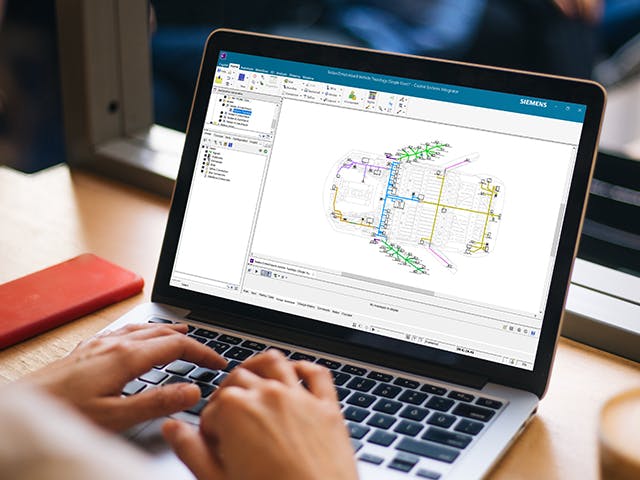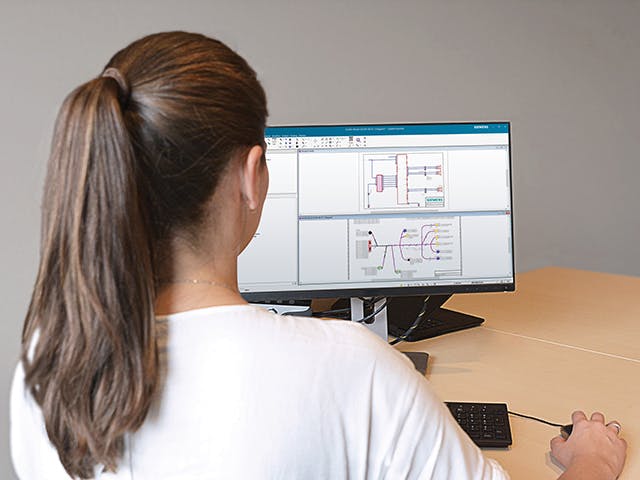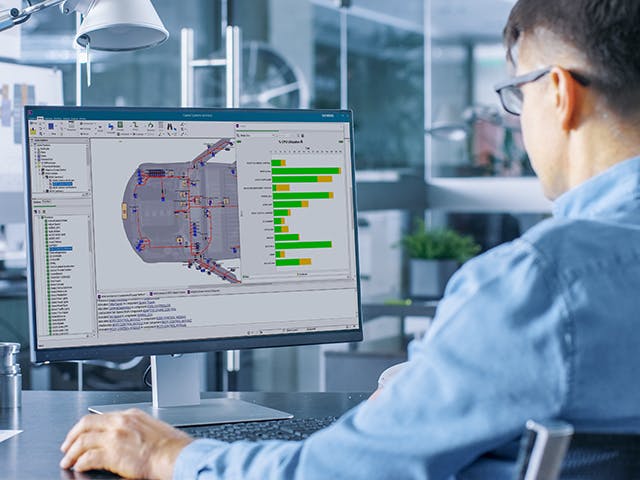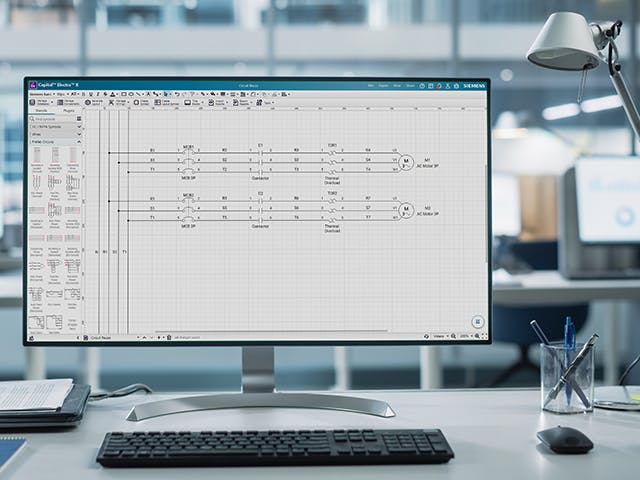
Optimalizujte návrhy elektrických systémů
Elektrická optimalizace a ověření
Inženýři potřebují rychle a snadno vytvářet návrhy svazků připravené k výrobě. Provádění analýzy a ověřování návrhů v rámci nástrojů s pokročilými metrikami. Používejte také integrované kontroly pravidel návrhu.
Návrh a simulace elektrických systémů
Potřebujete řešení s výkonným grafickým editačním prostředím a pokročilými možnostmi správy návrhu. Pomocí řešení Capital můžete vytvářet schematické návrhy interaktivně nebo pomocí automatického generování schémat.
Integrace elektrických systémů
Odstraňte velkou část úkonu systémové integrace pomocí generativního návrhu – jedná se o průlom v automatizaci integrace elektrických systémů. Ušetřete čas a zlepšete kvalitu, díky čemuž vám zůstane více prostoru na inovace.
Vytvářejte a vyhodnocujte elektrické návrhy pro zajištění efektivity
Řešení Capital pro projektování elektrických systémů umožňují inženýrům vytvářet logickou a fyzickou konektivitu v jednom prostředí. Rozšiřte tradiční interaktivní návrh o integrovaný pohled na platformu a použijte generativní návrh k automatické syntéze a ověření konfigurací zapojení.
Návrh a simulace elektrických systémů
Inženýři potřebují řešení s výkonným grafickým editačním prostředím a pokročilými možnostmi správy návrhu. Uživatelé tak mohou vytvářet chytře propojené logické návrhy systémů (signály nebo dálniční připojení) nebo vytvářet kompletní fyzické kabelové systémy (vodiče, spoje, vícenásobná jádra atd.).
Pomocí řešení Capital je možné vytvářet logická a kabelová schémata interaktivně nebo pomocí automatického generování schémat. Používá se k návrhu a integraci elektrických subsystémů, příkladem může být sloučení více subsystémů do fyzické struktury. Používá se také k syntéze implementací elektrických a elektronických platforem (systémů E/E ) s cílem optimalizovat náklady, hmotnost a složitost. Všechny návrhy jsou podporovány špičkovými možnostmi kontroly pravidel návrhu, analýzy metrik a tvorby výkazů.
Integrace a implementace elektrických systémů
Dnešní elektrické systémy jsou neuvěřitelně složité jak z hlediska výrobků, tak z hlediska variací. Aby si inženýři dokázali poradit, potřebují vysoce automatizovaná řešení, která jim pomohou porozumět důsledkům rozhodnutí v rámci návrhu a poskytnou jim důvěru v jejich návrhy. Klíčovým přístupem je generativní návrh – průlom v automatizaci integrace elektrických systémů.
Řešení Capital automaticky spojuje signálové propojení subsystémů s fyzickou topologií a vytváří tak plně podrobné návrhy zapojení vozidla. Tím odpadá velká část úkolů spojených s integrací systému, což šetří čas, zvyšuje kvalitu a ponechává inženýrům volnou ruku pro inovace a zkoumání široké škály fyzických architektur pro určení optimálního rozložení.
Elektrická optimalizace a ověření
Inženýři potřebují rychle a snadno vytvářet návrhy svazků, které jsou plné podrobností, jsou ověřené a připravené k výrobě. Než se návrhy dostanou do výrobních linek, je nutné zajistit, aby byly typu „připraveno k výrobě“, čímž by se minimalizovaly problémy s kvalitou a vyrobitelností. Elektrické závady mají vliv na úspěch či neúspěch výrobků na trhu. Simulace a analýza hrají klíčovou roli při včasném ověření elektrického systému, kdy je přepracování levnější a jednodušší.
Klíčovými vlastnostmi našich simulačních a analytických řešení jsou jednoduchost a snadné použití, které přinášejí možnosti ověřování návrhu do rukou každého elektrokonstruktéra. Řešení Capital umožňuje inženýrům analyzovat a ověřovat své návrhy v rámci nástrojů s pokročilými metrikami a integrovanými kontrolami pravidel návrhu. Ověřovací a analytické nástroje umožňují potvrdit správnost návrhu ještě před sestavením svazků. To umožňuje kompletní ověření elektrických návrhů spolu s automatizovanou certifikací a tvorbou výkazů.






